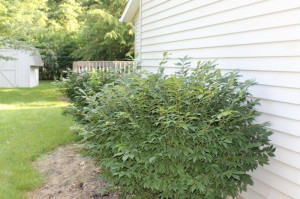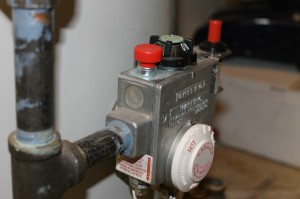In these contemporary times, it seems that more and more people are interested in having energy efficient homes. Although broadly defined, energy efficiency is basically a concept that refers to reducing the amount of energy used in providing services and products.
An example of making efficient use of energy would be insulating a home. Doing so allows the building to use less cooling and heating energy. There are several ways that insulation can take place, including through the installation of natural skylights or fluorescent lights.
These lighting measures reduce the amount of energy that would be used through traditional lighting mechanisms such as incandescent bulbs. This is just one way that you can make your home energy efficient. Here are seven more:
1. Ensure That Your Attics and Walls Are Insulated Well
As many energy experts know, effectively insulating your home is important because it decreases the rate at which heat flows out of your living space in winter. Additionally, it slows the rate that heat flows into your home during the summer.
In either case, the insulation results in less energy being required to cool or heat the house. If you want to create an energy efficient home through this insulation technique, you have several options.
If your budget permits, you can get in contact with a contractor who can install cellulose, fiberglass, or foam insulation. Each type can greatly reduce heat conduction within your wall system.
The key to making this form of insulation effective is proper installation, so be sure to use the services of a contractor with credentials and a good reputation.
2. Plant Shrubs and Shade Trees Around Your Home
 This tip is a great way to make an energy efficient home because the foliage can block infrared radiation that warms the home during summer. In the winter seasons, bare branches permit this wanted radiation to come through.
This tip is a great way to make an energy efficient home because the foliage can block infrared radiation that warms the home during summer. In the winter seasons, bare branches permit this wanted radiation to come through.
To make this measure effective, try planting the trees and shrubs on the west side of your home. (You should note that if your home already has great insulation, the positive effect of cultivating this type of landscape will be minimal. This is the case because the insulation you have in place will already be blocking nearly all of the heat gain.)
3. Make Your Hot Water System More Efficient
 To accomplish this strategy, bring the temperature of the water heater to 120F. Next, insulate the hot water lines in order to preclude them from cooling off rapidly between uses. Then, use fixtures with a low flow for baths and showers.
To accomplish this strategy, bring the temperature of the water heater to 120F. Next, insulate the hot water lines in order to preclude them from cooling off rapidly between uses. Then, use fixtures with a low flow for baths and showers.
With respect to the last strategy, you can hire a contractor to install hot water circulation loops that function “on demand.” With this type of circulation, a small pump is used to accelerate delivery of the hot water to your remote fixture.
This process will work well with your low-flow fixture. The circulating loops will be activated when you turn on your kitchen or bathroom tap. They will subsequently go off when the hot water reaches your low-flow fixture.
As many experts argue, the alternative-a continuous recirculating loop that works perpetually as opposed to on demand-wastes a great amount of energy (as well as any electricity utilized during the pumping process).
4. Replace or Upgrade Windows
 Cultivating an energy efficient home is often contingent upon window maintenance. If your windows are leaky and old, it is advisable to purchase new energy-efficient models. If you don’t want to make this type of investment, you may find it advantageous to boost their efficiency with storm windows and weatherstripping.
Cultivating an energy efficient home is often contingent upon window maintenance. If your windows are leaky and old, it is advisable to purchase new energy-efficient models. If you don’t want to make this type of investment, you may find it advantageous to boost their efficiency with storm windows and weatherstripping.
Although window replacement can be a bit expensive, the increased aesthetic appeal of new windows-as well as the fact that your home will waste less energy-makes the endeavor worth embarking on.
5. Unplug Your Old Refrigerator When You Buy A New One
To some people, this tip may seem unnecessary given that replacing an old refrigerator with a new one means that the former is given away or thrown out. In some cases, however, an individual might keep the old refrigerator plugged in for backup purposes such as storing extra party supplies.
When you keep an old refrigerator plugged in-whether for extra storage space or some other purpose-you’ll cost yourself an additional $50-$150 every year in electricity. The new fridge, however, would likely only cost around $30-$60 each year because efficiency in models marketed to people in the last several years has improved.
While some people might argue that they need the space afforded by having two refrigerators, sometimes making effective use of just one refrigerator is possible when you consider space being wasted by food products that you have not nor will ever use.
6. Replace Older Furnace With A High-Efficiency System
If you currently use a furnace which was built prior to 1992, the machine is probably wasting about 35% of its fuel. Moreover, it is likely approaching the conclusion of its working life.
If you have an older furnace, it is recommended that you replace it with a condensing furnace. The new furnace should have an annual efficiency of 90% or more.
With this kind of furnace, you’ll waste no more than 10% of the gas you purchase. Moreover, you can save up to 27% on heating bills.
7. Get Expert Advice Through An Energy Audit
While the strategies listed above can help make your home more energy efficient, getting advice from the experts is almost always advantageous because they will generally know at least one thing that you don’t.
In short, energy raters and auditors make use of specialized skills and tools to analyze your living space. Once this is done, these experts can recommend cost-effective strategies that improve the efficiency and comfort of your home.
Additionally, the rater will likely be able to provide information regarding the quality of a particular contractor’s work. If you are looking for a rater, be sure that they are accredited by RESNET.
As you learn more and more about ways to create an energy efficient home, you will find yourself living in comfort and efficiency while ensuring that the environment remains a bit more resilient. Good luck!
Hi Mike,
I wonder if any of your list customers would be interested in energy blocks. Can be used for horse stalls donkey barns etc. I have a building back ground and I`am working on efficient unit prototype around 270sq ft. P.S. Theses blocks aren’t cheap but are extremely efficient guaranteed.
Larry
You have suggest useful tricks for making a home more energy efficient, it’s really a considerable thing that attics and walls are insulated well because attic is the important part of every home, it get affected quickly to weather changes, so i also think that insulation should installed properly in this area. This post is really very helpful, thanks for sharing..